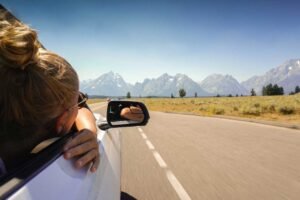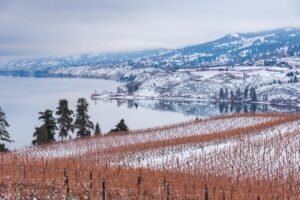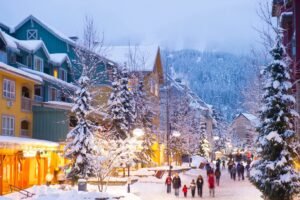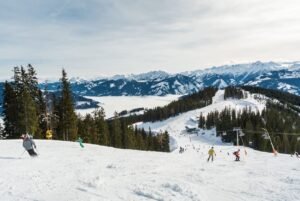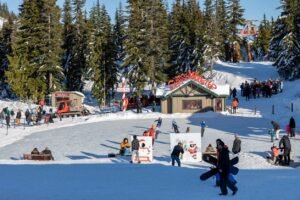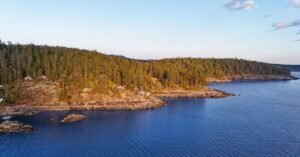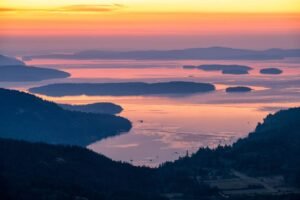Planning the drive from Vancouver to Calgary and wondering about what route to take for the best stops along the way? Cover the 1,000-kilometer stretch with confidence. This article does away with the guesswork, offering you concrete tips on travel time, the optimal season for driving, and a curated list of not-to-be-missed spots. We’ll guide you through the essentials for a journey that’s both safe and filled with the natural beauty of the Canadian Rockies—without the fluff.
Key Takeaways
-
Plan at least a two-week road trip from Vancouver to Calgary to get the most out of Canada’s scenic Western landscape; map out routes with safety in mind, and pack a checklist that includes vehicle essentials and comfort items.
-
The ideal time for this journey is June to September for optimal accessibility and conditions; be prepared for varied mountain driving conditions and intermittent cell service, and consider engaging experiences like the scenic Sea-to-Sky Highway or Southern Route for an enriched adventure.
-
Accommodation along the route ranges from budget hostels to luxury lodges; the trip is also a culinary exploration of local flavors and experiences, and staying informed about road conditions and carrying travel insurance can ensure a smoother road trip.
Planning Your Epic Road Trip from Vancouver to Calgary
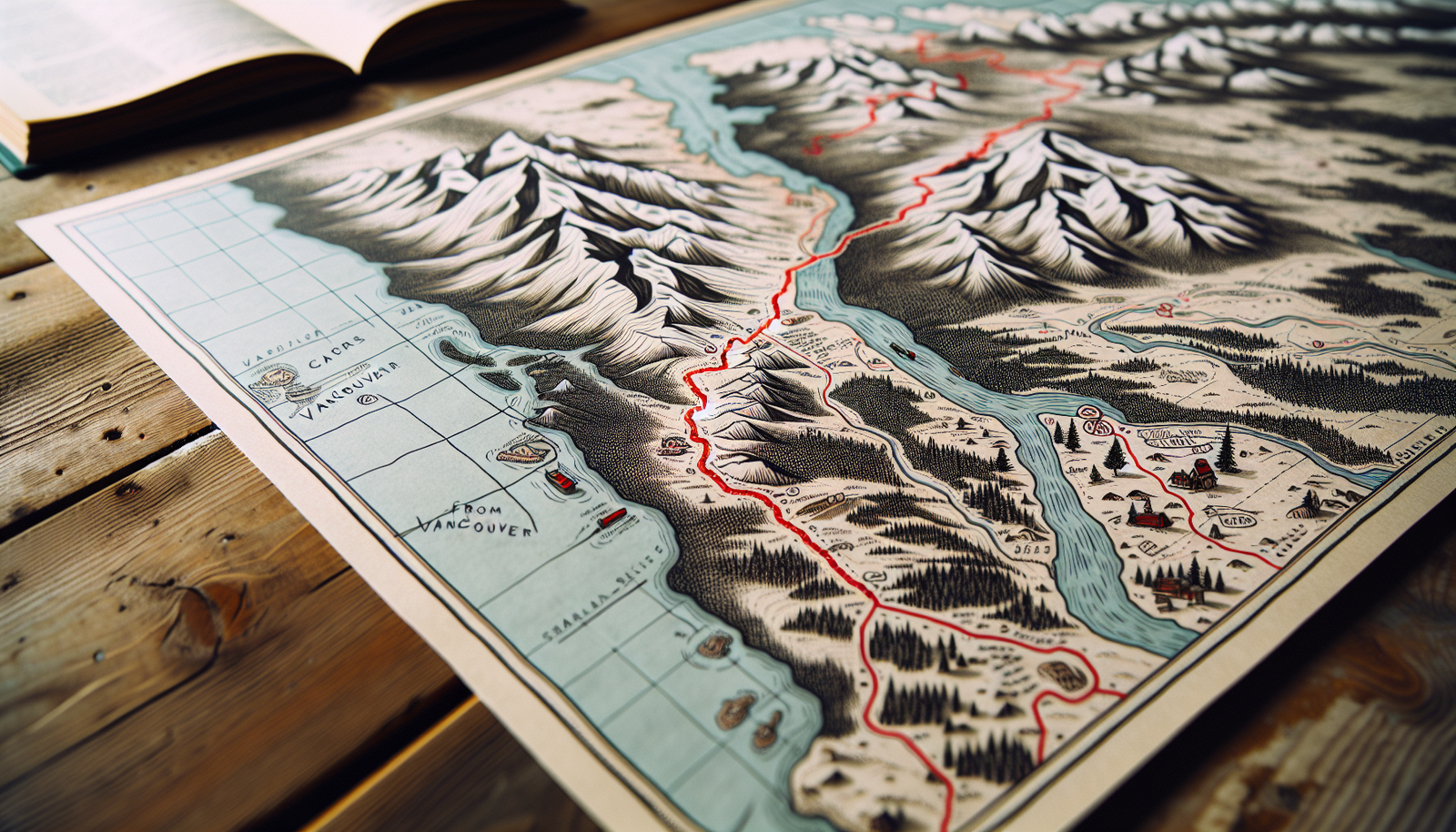
An epic road trip is more than just a journey; it’s an adventure that unfolds with every kilometer. The drive from Vancouver to Calgary, spanning approximately 1000 km, is one such captivating journey that traverses through the heart of western Canada. It’s a scenic route that takes anywhere from 10.5 to 14 hours of pure driving time. But, to truly appreciate the grandeur of the Canadian Rockies and the charm of British Columbia, you should plan to span at least two weeks on this trip.
The most direct route from Vancouver to Calgary takes you through the town of Hope, BC via the Trans Canada Highway, covering roughly 985 kilometers. However, taking the road less traveled often leads to the most enriching experiences. Starting your road trip planning with a map study helps you determine the best route, factoring in the highlights and personal preferences. Whether you’re a fan of mountain biking or you’re keen to shred the slopes, the right route can elevate your road trip experience.
Safety, they say, is no accident. It’s a critical element of any road trip. While the Vancouver to Calgary route promises an epic road trip, it’s crucial to ensure personal safety and protect against liabilities. A disclaimer for damage, personal injuries, or death resulting from the use of provided information, maps, etc., is a necessary part of safe travel.
Optimal Season for Your Journey
Every road trip has its golden season, a window of time when the journey becomes a little more magical. For your Vancouver to Calgary road trip, that window opens between June and September. These warmer months present the ideal conditions for exploring the scenic route, as attractions and activities become more accessible.
However, venturing outside this window may lead to variable weather conditions and reduced accessibility. Attractions such as Moraine Lake have limited visiting seasons, open from the end of May until mid-October. To fully experience the charm of the Canadian Rockies and make the most of your road trip itinerary, timing your journey in accordance with the optimal season is key.
Navigating Mountain Highways with Confidence
Mountain highways, with their winding paths and elevated terrains, can be both thrilling and challenging. Mastering the art of navigating these roads is crucial for an enjoyable road trip. On the Coquihalla Highway, for instance, winter tires are mandatory from October to April. These tires must have a minimum tread depth of 3.5 millimeters to ensure safe navigation, even through potentially snowy conditions that can occur any time of the year.
Before setting off from Hope, it’s recommended to fill up your gas tank and check online resources like DriveBC in British Columbia and Alberta’s 511 service. These platforms provide continuous updates on the status of mountain highways, including the Coquihalla Highway. A well-prepared traveler is a safe traveler.
Mountain highways demand a cautious approach to driving, allowing ample time to react to changing road conditions and traffic. Plus, while you’re navigating these highways, expect intermittent cellular phone service, especially in areas between Pemberton and Lillooet, as well as between Salmon Arm and Revelstoke. Knowing what to expect helps you plan better and ensures a smoother drive through these mountainous terrains.
Road Trip Essentials Checklist
A meticulously planned checklist is the secret ingredient to a successful road trip. It starts with ensuring your vehicle is in optimal condition. Check the tire pressure, oil levels, and functional lights. Also, don’t forget to pack a full spare tire, because you never know when you’ll need one. These measures are vital for a safe journey.
Being prepared for emergencies can make a world of difference. Here are some items to pack:
-
Roadside emergency kit
-
Jumper cables
-
Extra gas
-
Tire pressure gauge
-
Vehicle fluids
Besides, don’t forget to pack a Parks Canada Pass, which is essential for access to national parks along the route.
But a road trip isn’t just about the drive; it’s also about enjoying the journey. For comfort during long drives, bring along pillows, blankets, and an insulated mug or bottle for hot drinks. Pre-downloaded music and podcasts, along with charger cables for all electronic devices, can keep you entertained throughout the journey. Remember to pack skin care items like lip balm and body lotion to prevent dryness, especially if you are planning outdoor activities. A dash-cam can record the journey and provide security. And yes, don’t forget the first-aid kit with painkillers, bandages, and alcohol wipes. Lastly, hand sanitizer is a must for maintaining hygiene when facilities aren’t available.
Discovering the Best Routes: Vancouver to Calgary Explorations
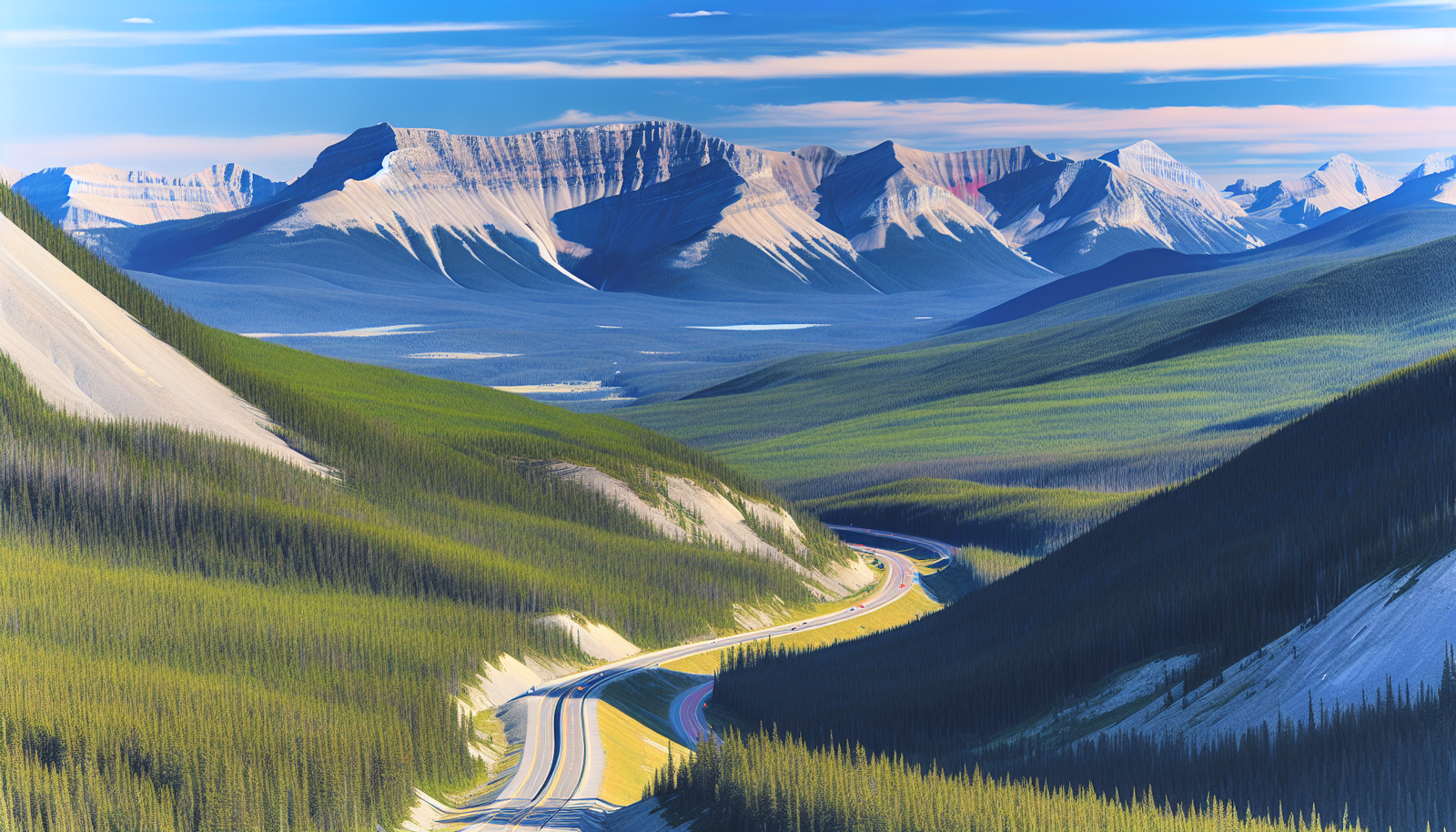
Every great road trip is a journey of discovery, and the drive from Vancouver to Calgary is no exception. Highway 1, also known as the Trans Canada Highway, is the most popular driving route between these two cities. It’s hailed for its top four road trip routes, presenting a comprehensive experience with magnificent peaks, waterfalls, and glaciers.
As you traverse these routes, you’ll witness a dramatic transition of landscapes. From the coastal temperate rainforest to the semi-arid landscape between Hope and Kamloops, the journey offers a visual treat of water in all its forms. The Canadian Rockies further enrich the road trip experience, making it a truly immersive exploration.
Adventure seekers can venture off the beaten path, exploring routes like the scenic Route 99. These alternatives offer uncharted experiences and explorations of characterful small towns.
The distance of the road trip from Vancouver to Calgary spans approximately 2000km, allowing an expansive journey through Canada’s diverse landscapes.
The Iconic Trans Canada Highway Experience
The key highlights of this route include stops at renowned national parks such as Banff and Jasper. Each of these parks presents a vast array of natural wonders and recreational activities. From exploring Banff National Park along the Icefields Parkway to taking the Columbia Icefield Explorer tour, the Trans Canada Highway offers a window into the heart of the Canadian Rockies.
The journey doesn’t stop at sightseeing. The Kicking Horse Canyon Project is a significant ongoing development enhancing the Trans Canada Highway between Golden and Field. This project aims to provide better safety and enhance the travel experience, making your road trip even more memorable.
The Scenic Sea-to-Sky Corridor
The Sea-to-Sky Highway offers:
-
Scenic views
-
Natural wonders
-
British Columbia’s rugged wilderness
-
Serene landscapes
It’s a journey that paints a beautiful picture of the area.
The major attractions along this corridor include the towering Shannon Falls, the pristine Garibaldi Lake, and the charming Whistler Village. Adventurous spirits can take a ride on the Sea to Sky Gondola and cross its suspension bridge for panoramic views from the summit. With an array of hiking opportunities around Brohm Lake, eagle viewing at Brackendale, and kayaking at Alice Lake, the Sea-to-Sky Corridor is a playground for nature lovers.
The journey isn’t just about natural beauty. The area is rich in history and culture, too. You can:
-
Explore vintage train cars at the Railway Museum of British Columbia
-
Step into the mining past at Britannia Mine Museum
-
Scale the heights of the Stawamus Chief for panoramic views
-
Savor local flavors with a visit to Howe Sound Brewing Company
The Adventure-Packed Southern Route
This unique route takes you through historical sites like the Hope Slide and cultural attractions such as Castlegar’s Sculpturewalk and the Doukhobor Discovery Centre. Each of these sites offers a glimpse into the rich history and vibrant culture of Western Canada.
The Southern Route also offers an array of recreational activities. You can:
-
Relax on the beach and indulge in water sports at Christina Lake
-
Spot wildlife and go rafting in Fernie
-
Explore the historic and vibrant scene in Vernon.
The crown jewel of this route is the Okanagan Valley, famous for its warm lakes, delicious fruit, and renowned wine culture. If you’re looking for a unique road trip experience, the Southern Route promises an adventure-packed journey with a perfect balance of history, culture, and nature.
Majestic National Parks on Your Route

Your road trip from Vancouver to Calgary is more than just a drive; it’s a ‘Sea to Summit’ experience. As you move from the temperate rainforest near Vancouver to the towering, snow-capped peaks within national parks, you’ll witness the sheer diversity of Canada’s landscapes. Whether it’s the highest peak in the Canadian Rockies at Mount Robson or the pristine wilderness of Jasper National Park, each stop along the way offers a unique experience.
One of the highlights of this journey is undoubtedly Banff National Park. Known for its stunning mountain vistas and extensive network of hiking trails, this park offers iconic spots such as Lake Louise and Moraine Lake. Banff National Park has something for everyone.
The journey doesn’t stop at Banff. Canmore and Kananaskis Country are famous for both photography and hiking, boasting dramatic landscapes in the Canadian Rockies. Jasper is filled with breathtaking photo opportunities, allowing travelers to capture the beauty of the Rockies. And let’s not forget the dark skies above the mountain parks, which provide an exceptional setting for astrophotography, inviting both novices and professionals to capture the night sky.
Banff National Park: Jewel of the Rockies
Banff National Park, often referred to as the Jewel of the Rockies, is a paradise for nature enthusiasts. Renowned for Lake Louise, an iconic destination with a striking glacier backdrop, the park offers a myriad of activities. Whether it’s paddling during summer or ice skating in winter, Lake Louise provides an unforgettable experience.
Another gem of Banff National Park is Moraine Lake. This lake provides an equally breathtaking setting with opportunities to explore the lake and surrounding areas. With trails such as Big Beehive & Mount Saint Piran, the park caters to hiking enthusiasts seeking memorable experiences. For those seeking challenging hikes with panoramic vistas, the Big Beehive trail or even the Sentinel Pass via Larch Valley Trail are worth considering.
Accessible trails with stunning views, such as Lake Agnes Trail, and hikes with interpretive elements like Johnston Canyon to Upper Falls, provide varied experiences for park visitors. The Sulphur Mountain and Plain of Six Glaciers trails offer elevated viewpoints and the chance to encounter the grandeur of the park’s natural landscape. Whether you’re a seasoned hiker or a casual walker, Banff National Park promises an unforgettable hiking experience.
Yoho National Park: Nature’s Playground
There’s a reason why Yoho National Park is often referred to as Nature’s Playground. Its breathtaking landscapes and diverse wildlife make it a haven for nature lovers. Emerald Lake, renowned for its vivid turquoise hue, is one of the park’s main attractions. Whether you’re paddling on the lake or dining at a lakeside restaurant, the lake offers a serene escape from the hustle and bustle of city life.
The park also boasts some of the most impressive waterfalls in Canada. The Takakkaw Falls, the second-highest waterfall in the country, is a must-visit natural wonder. Accessible directly by car without the need for hiking, the waterfall offers a powerful display of nature’s fury and beauty.
Another highlight is Wapta Falls, the park’s largest waterfall on the Kicking Horse River, located near the Kicking Horse Mountain Resort. A magnificent sight, it’s accessible via an easy 5km trail, making it a perfect destination for a family outing.
When it comes to accommodation, Yoho National Park offers unique experiences. Emerald Lake Lodge provides an enchanting stay, combining easy car access with seclusion. On the other hand, Lake O’Hara Lodge offers an exclusive mountain getaway, with access controlled by bus in summer.
Glacier National Park: A Hiker’s Haven
For hikers, Glacier National Park is a paradise. The park boasts over 87 miles (140 km) of trails, ranging from easy walks to challenging hikes. Whether you’re exploring the historic 1885 Trail, taking on the panoramic Glacier Crest Trail, or attempting the adventurous Iceline via Little Yoho circuit, the park offers an array of hiking experiences.
The park’s geography is equally impressive. It features:
-
Mount Dawson, the tallest peak
-
Mount Sir Donald, a prominent mountain
-
Rogers Pass, a key part of the park that adds to the scenic beauty and offers a unique hiking experience.
The park’s landscape is a testament to nature’s grandeur.
Glacier National Park is home to diverse wildlife, including predators such as cougars and bears, the elusive lynx, and over 230 bird species. The park also offers year-round activities. Whether you’re hiking in summer or backcountry skiing in the winter landscape, Glacier National Park promises a memorable outdoor adventure.
Enchanting Stops Along the Way
Whether it’s the unique Spotted Lakes, the Anarchist Mountain views in the Osoyoos area, or the power of nature at Nairn Falls, each stop offers a unique experience that leaves you with lasting memories.
For those seeking an adrenaline rush, the route from Kamloops to Revelstoke is an adventure lover’s dream. With options like boating on Shuswap Lake, visiting Margaret Falls, and trying the Pipe Mountain Coaster, there’s never a dull moment on this journey. And for those who prefer a more relaxed experience, there’s Salmon Arm. This charming town offers breathtaking hikes, exquisite fresh produce, and top-notch wineries for a balance of adventure and indulgence.
Each stop along the way offers a unique blend of culture and nature. Be it the rural charm of Pemberton with activities such as farm visits and horseback riding or Squamish’s cultural offerings like the Sea To Sky Gondola and the impressive heights of the Stawamus Chief, these stops enrich your road trip itinerary and make your journey truly unforgettable.
Cultural and Natural Wonders
Each town along the way has a story to tell, a piece of history to share. Lillooet, for instance, was an epicenter during the Gold Rush of 1858. Today, visitors to this quaint town can explore artifacts from that era, taking a step back in time.
Revelstoke and Golden are historic mountain towns nestled between the Selkirk and Monashee mountains. These towns, with their rich railway and gold mining heritage, offer a rich cultural experience. Whether it’s the Revelstoke Railway Museum, the Revelstoke Museum & Archives, or Kicking Horse Culture’s music, theater, and dance at the Golden Civic Centre, these towns offer a unique insight into the region’s past and present.
Lillooet Lake, for instance, is a site of natural restoration that travelers can watch slowly regain its original turquoise hue. Whether you’re exploring the culture of these towns or marveling at their natural beauty, each stop along the way offers a unique experience that adds to the richness of your road trip.
Lakes and Waterfalls: Nature’s Miracles
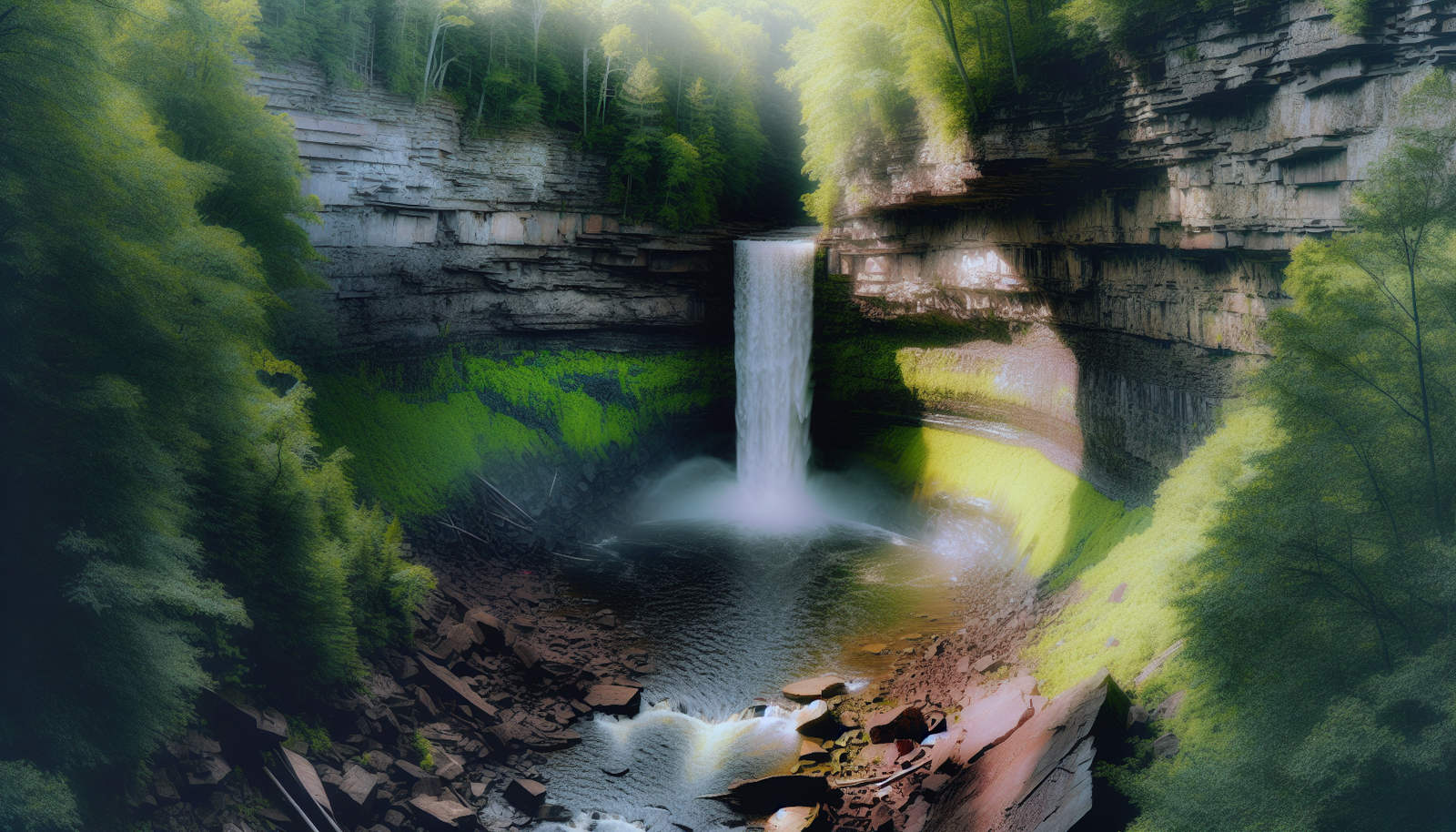
The journey from Vancouver to Calgary is a visual treat, with stunning lakes and waterfalls dotting the route. Brandywine Falls, a breathtaking 70-meter waterfall, is just a short hike away from viewing platforms. The waterfall showcases a canyon carved into lava columns, making it a sight to behold.
Another highlight of your journey is Bridal Veil Falls. This site, a symbol of early hydroelectric power generation, offers visitors a glimpse into early 20th-century history, along with the natural beauty of the falls. But the journey doesn’t stop at waterfalls. The route also offers stunning lakes that are worth a visit. Joffre Lakes Provincial Park, renowned for its three turquoise lakes, and Garibaldi Lake in Garibaldi Provincial Park offer a stunning alpine lake experience.
Visiting these lakes and waterfalls is more than just sightseeing; it’s an immersive experience. From the roar of the waterfalls to the serene calm of the lakes, each stop along the way offers a glimpse into nature’s miracles. And while these stops add to the charm of your road trip, they also offer a moment of respite from the long drive, making your journey more enjoyable.
Mountain Town Charms
Mountain towns have a unique charm. Revelstoke, for instance, boasts excellent powder skiing at Revelstoke Mountain Resort and summer activities including The Pipe Mountain Coaster.
Kamloops, another charming mountain town on your route, offers a range of activities for all seasons. From winter sports to hiking and paddling in the warmer months, Kamloops is a destination worth exploring. Another stop on your route, Sicamous, is renowned as the houseboat capital of Canada. This unique town offers a unique lake experience and winter activities like snowmobiling.
Each of these towns offers a unique dining experience, too. Whether it’s the Eclipse Coffee Roasters in Canmore with their specialty single-origin coffee blends or the Hilltop Inn in Salmon Arm that offers a family-friendly dining experience, these mountain towns offer a culinary experience that matches the grandeur of their landscapes.
Accommodation and Dining: Where to Rest and Refuel
A road trip is as much about the journey as it is about rest and relaxation. After all, the quality of your rest can make or break your road trip experience. The road from Vancouver to Calgary offers a range of accommodation options, from budget-friendly hostels to luxury resorts. Whether you’re staying at the Pangea Pod Hotel, the Wicked Hostels in Calgary, or the Swiss Chalet Motel, you’re sure to find a place that suits your needs and budget.
There are also strategic stopover towns along the route that offer excellent accommodations. Reynolds Hotel in Lillooet, Moose Hotel & Suites and Rimrock Resort Hotel in Banff, and Along River Ridge Bed & Breakfast in west Calgary are all highly recommended. These accommodations offer a blend of comfort and convenience, making them ideal rest stops on your road trip.
Staying in the Heart of Nature
There’s something truly magical about staying in the heart of nature. The silence of the wilderness, the starry night skies, and the break of dawn over the mountains – it’s an experience that stays with you long after the trip is over. The road from Vancouver to Calgary offers several remote lodgings that offer this immersive nature experience.
Skoki Lodge and Assiniboine Lodge are two such places that offer guests the chance to stay deep within the wilderness. Accessible only by hike or air, these lodgings offer a unique backcountry experience, complete with candle-lit rooms and rustic elegance. These lodgings offer a peaceful retreat from the hustle and bustle of city life, allowing you to connect with nature on a deeper level.
If you prefer a balance of nature and comfort, there are accommodations that offer the best of both worlds. Hidden Ridge Resort, Aurum Lodge, and Horse Mountain Resort offer nature stays that include some modern conveniences like natural hot pools or dog-friendly accommodations. These accommodations allow you to enjoy nature without fully detaching from comfort, making them ideal for a relaxing road trip.
Culinary Delights in Small Towns
A road trip is a culinary journey, too. As you traverse from Vancouver to Calgary, you’ll get the chance to sample a variety of local cuisines. From French Canadian fare in Beaumont to southern-style barbecue in Nisku and handcrafted cheeses in Vermillion, each town along the way offers a unique culinary experience.
But the culinary delights on this road trip aren’t just about food; they’re also about the experience. You can:
-
Explore a taproom featuring small-batch beers in Lacombe
-
Savor house-baked pastries ready to bake at home in Cochrane
-
Enjoy homemade sweet treats in Okotoks
These unique dining experiences add a flavorful touch to your road trip, making the journey even more enjoyable.
Each town along the way also offers unique dining establishments that enhance the culinary experience. Whether it’s a 2D-style cafe in Okotoks, an old-fashioned ice cream parlor in Sylvan Lake, or a cozy coffee spot in Bentley, these places offer inviting atmospheres that make your dining experience even more memorable.
Car Rental Insights
Renting a car is often the most convenient way to explore the route from Vancouver to Calgary. With a reliable car rental company, you can ensure comfort, safety, and convenience on your road trip. Enterprise, Hertz, and Avis are highly recommended for their broad selection of vehicles and flexibility in pick-up and drop-off locations. Whether you’re navigating the winding mountain roads or cruising along the scenic routes, a reliable vehicle can make all the difference.
Finding the best deal on car rentals can be a daunting task. But with platforms like the Discover Cars website and Rental Cars, you can search for the most comprehensive car rental deals. These platforms offer a wide range of vehicles at the best market value, making it easy to find a vehicle that suits your needs and budget. For the cheapest car option, you can anticipate an approximate cost of around $100 CAD per day. This allows for flexible pick-up in Vancouver and drop-off in Calgary, making it a cost-effective option for your road trip.
Navigation and Connectivity
Navigation and connectivity are crucial for a smooth and enjoyable road trip. Here are some tips to ensure you stay on track:
-
Use paper maps, as cell phone coverage is scarce outside urban centers in British Columbia.
-
Download maps on navigation apps to ensure access to accurate driving directions even when offline.
-
Be prepared for intermittent connectivity on the Vancouver to Calgary route.
A fully charged cellphone is indispensable in emergency situations, so make sure to carry a charger to keep your device operational throughout the trip. For improved connectivity, consider carrying a cell phone booster. This device amplifies signal reception, significantly improving connectivity for mobile devices during the drive in remote areas. With these tips, you can ensure reliable navigation and connectivity during your road trip, making the journey smoother and more enjoyable.
Capturing the Canadian Rockies
Capturing the Canadian Rockies through the lens of a camera is a unique experience. Whether you’re a professional photographer or an amateur shutterbug, the Rockies offer a wealth of photographic opportunities. From the towering peaks to the serene lakes, each snapshot is a testament to the region’s natural beauty. Including a human element in your photographs can convey the vast scale of the Canadian Rockies, while using a telephoto lens or zoom functionality can emphasize the prominence of the mountains in the backdrop.
Photographing the Canadian Rockies isn’t just about capturing its beauty; it’s also about experimenting with different perspectives. Changing your position, such as getting down low, can lead to new and captivating photographic compositions. Whether you’re capturing the iconic Moraine Lake in Banff National Park or the stunning vistas from Morant’s Curve, each photo offers a unique perspective of the Canadian Rockies.
Summary
The road trip from Vancouver to Calgary is an epic journey through Canada’s diverse landscapes. From the majestic peaks of the Canadian Rockies to the serene lakes and charming mountain towns, each stop along the way offers a unique experience. Whether you’re exploring the scenic routes, hiking through national parks, or savoring local cuisine, this road trip promises a wealth of memorable experiences. So, pack your bags, hit the road, and embark on the adventure of a lifetime!
Frequently Asked Questions
Is the drive from Vancouver to Calgary worth it?
Yes, the drive from Vancouver to Calgary is worth it as it offers a highlights reel of British Columbia and Alberta, making it a smart choice for visitors with limited time. So, go for it if you want to see as much as possible in a short time!
What is halfway from Vancouver to Calgary?
The halfway point between Vancouver and Calgary is Sicamous. It’s a great spot to take a break if you’re driving between the two cities.
What is the best time of the year to embark on a road trip from Vancouver to Calgary?
The best time to embark on a road trip from Vancouver to Calgary is between June and September when the weather is favorable and attractions are more accessible. Enjoy your trip!
What are some of the key highlights along the Trans Canada Highway?
Some key highlights along the Trans Canada Highway are Banff National Park, Jasper National Park, and the Columbia Icefield Explorer tour. You’ll definitely want to check them out!

